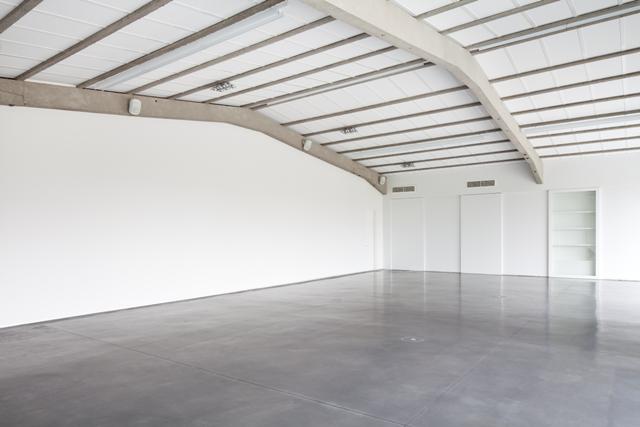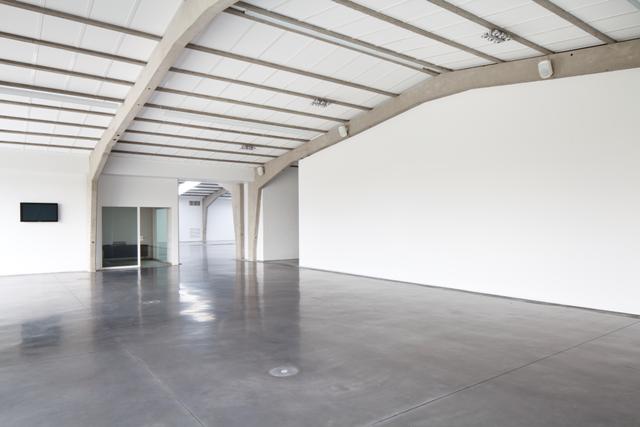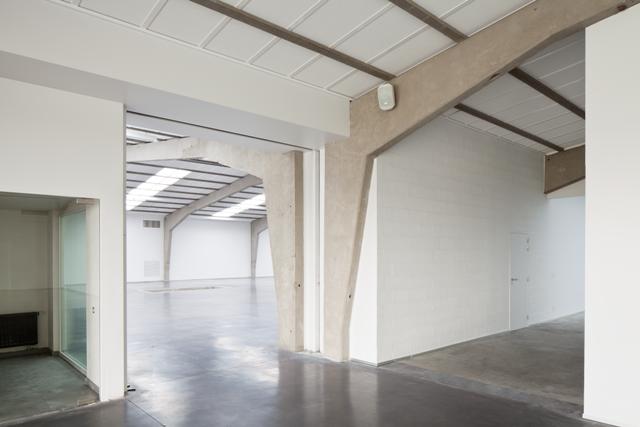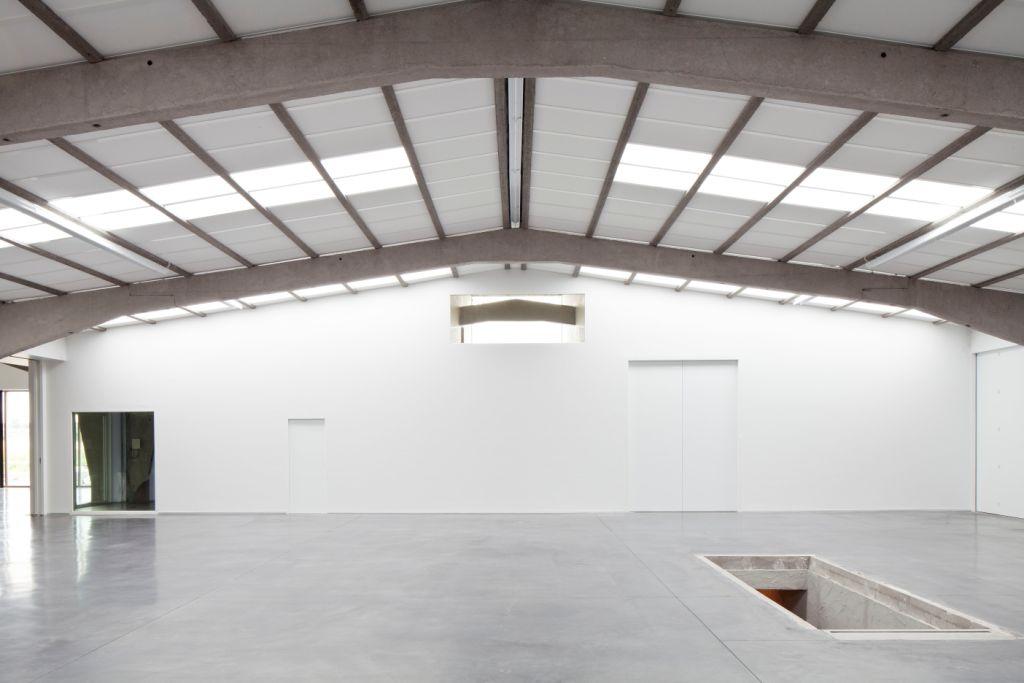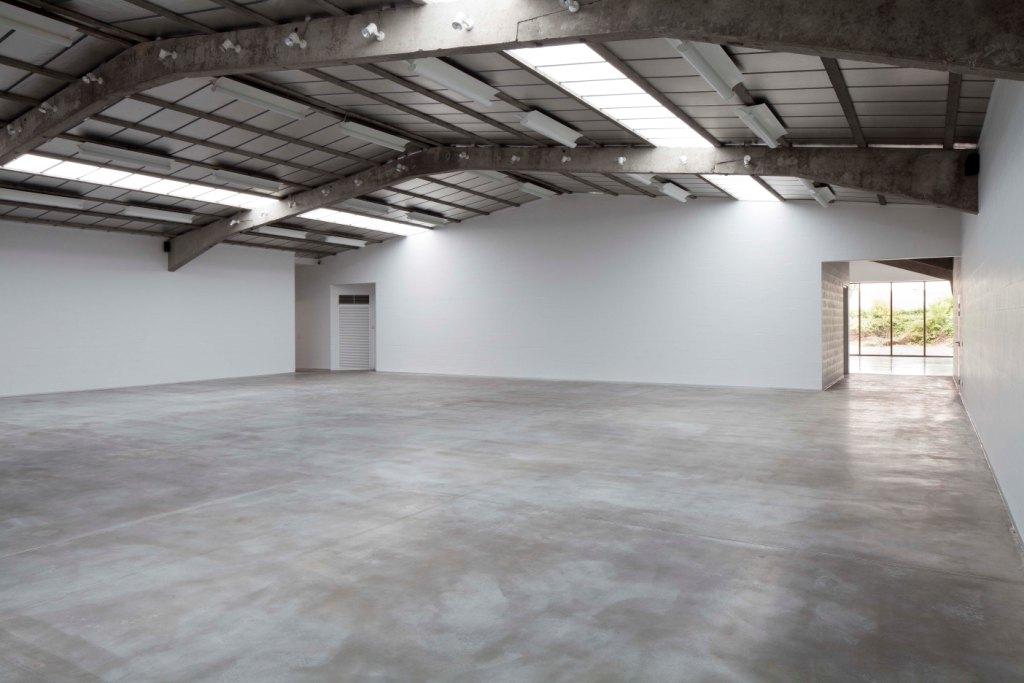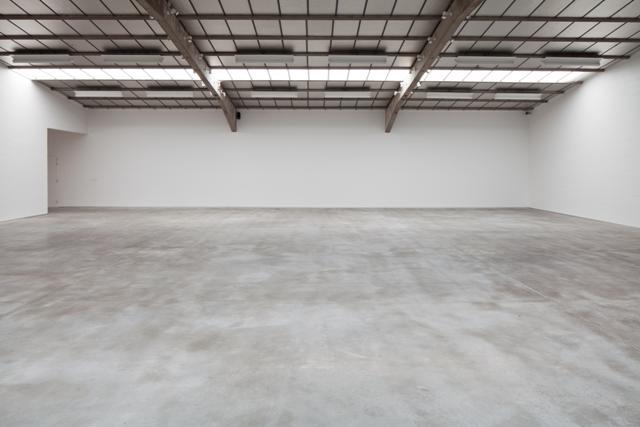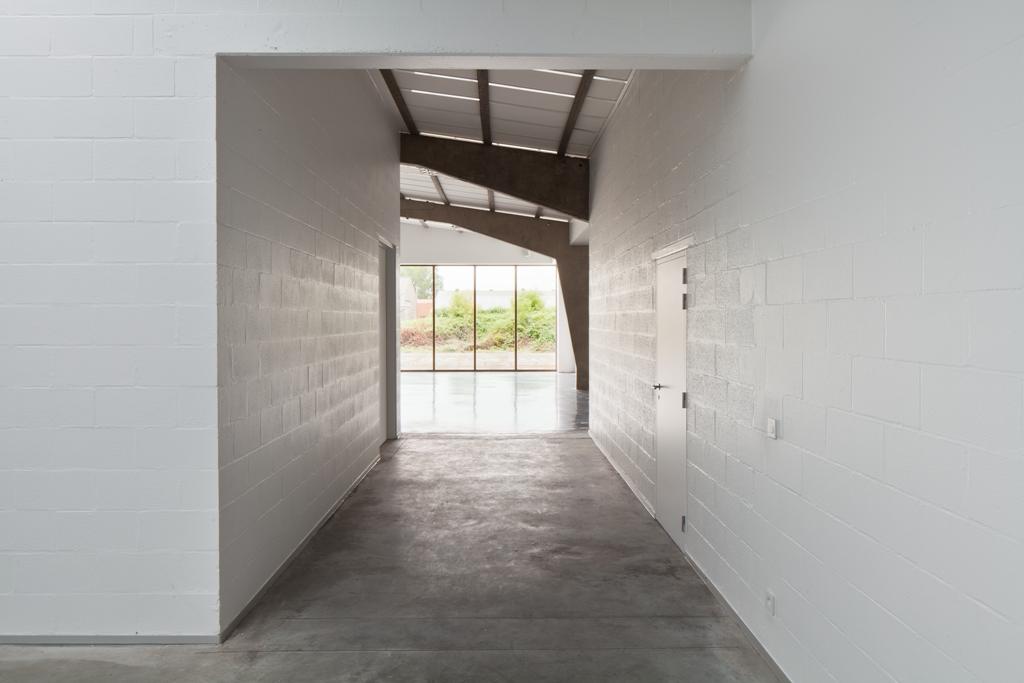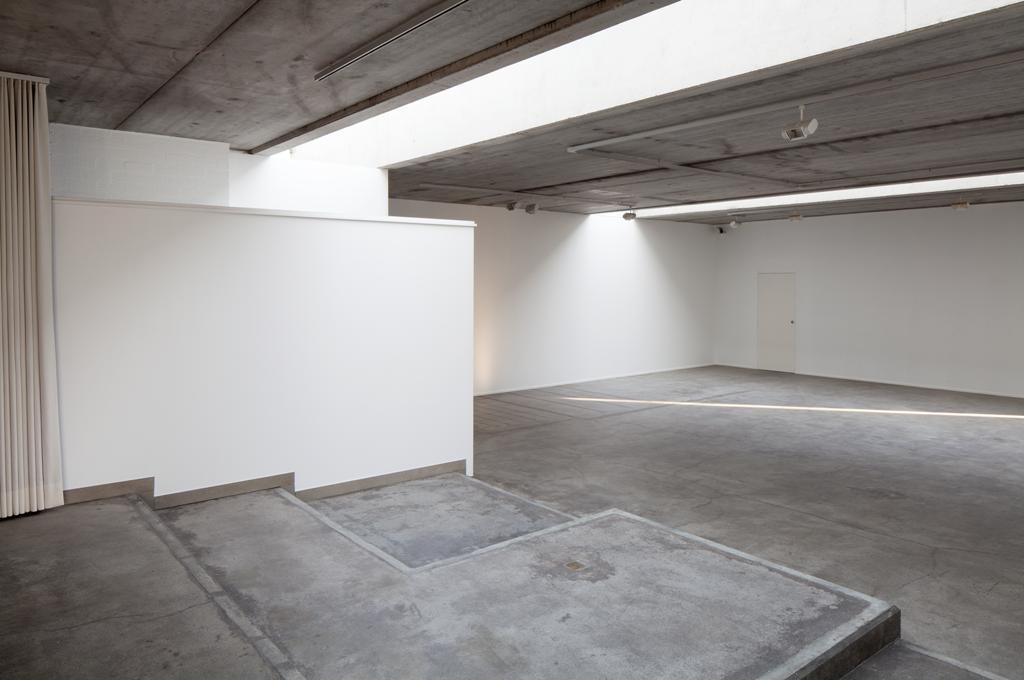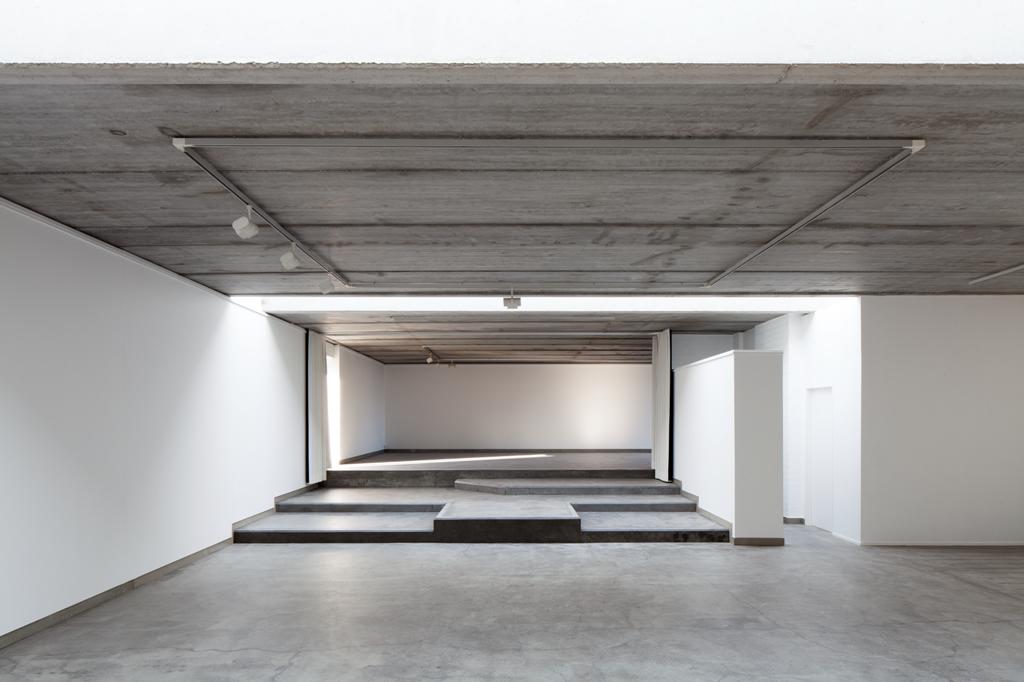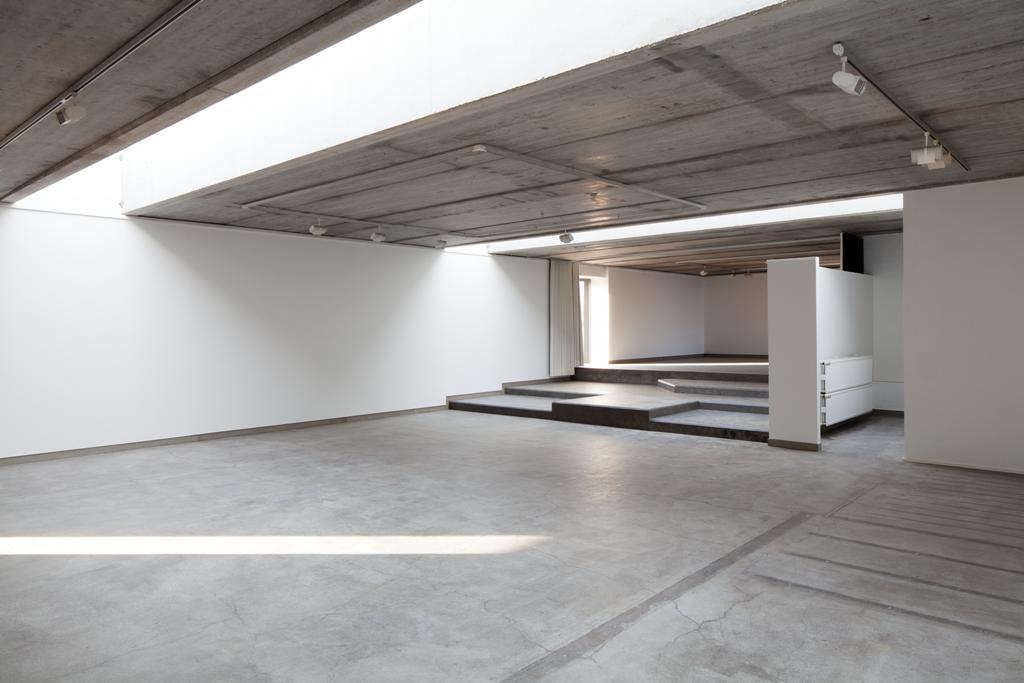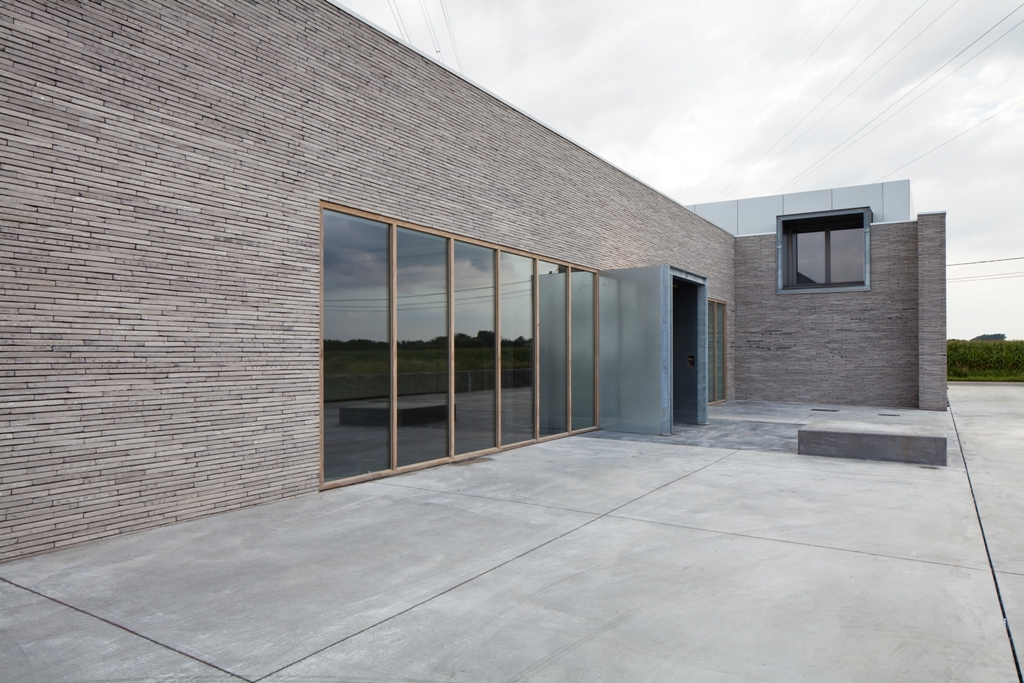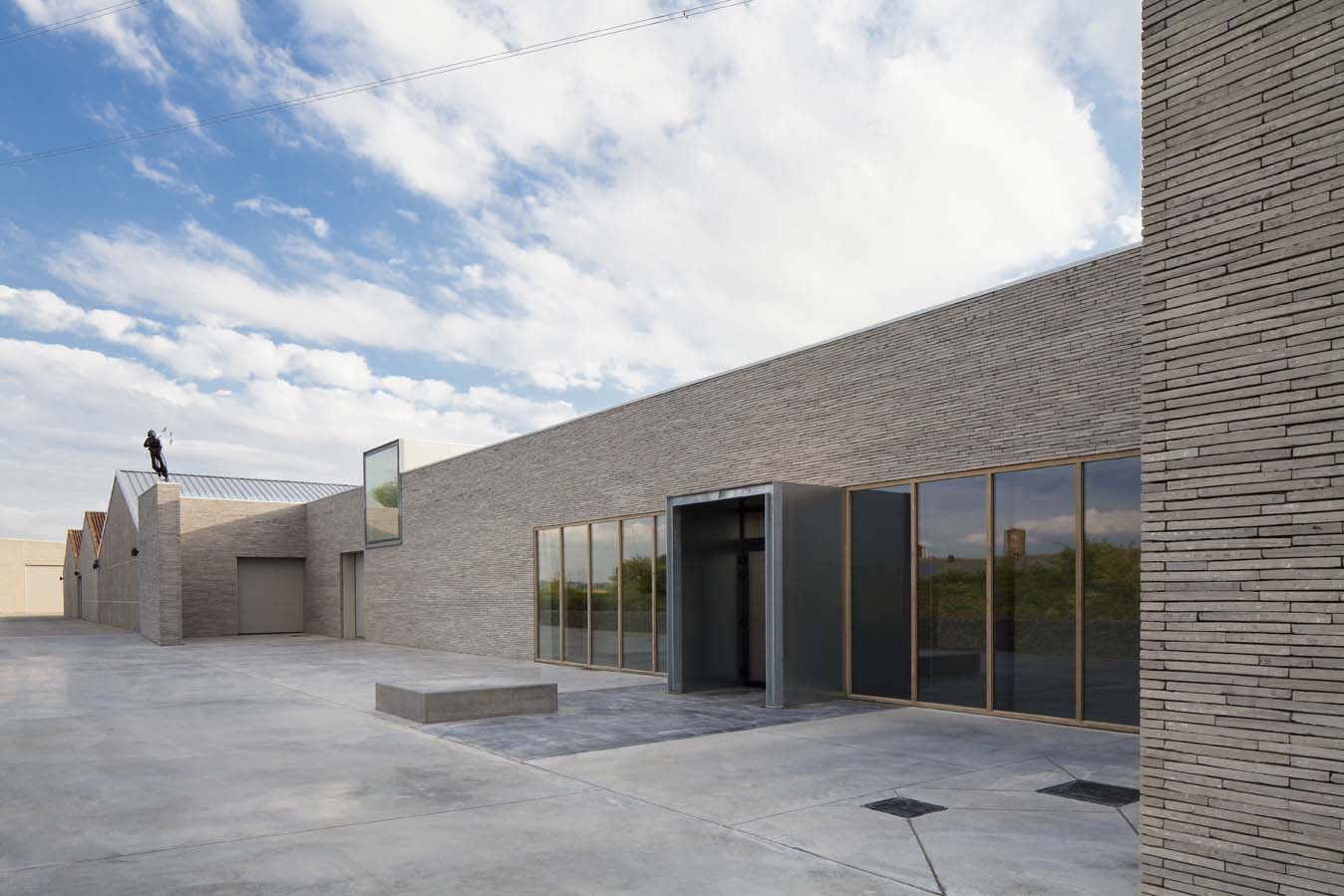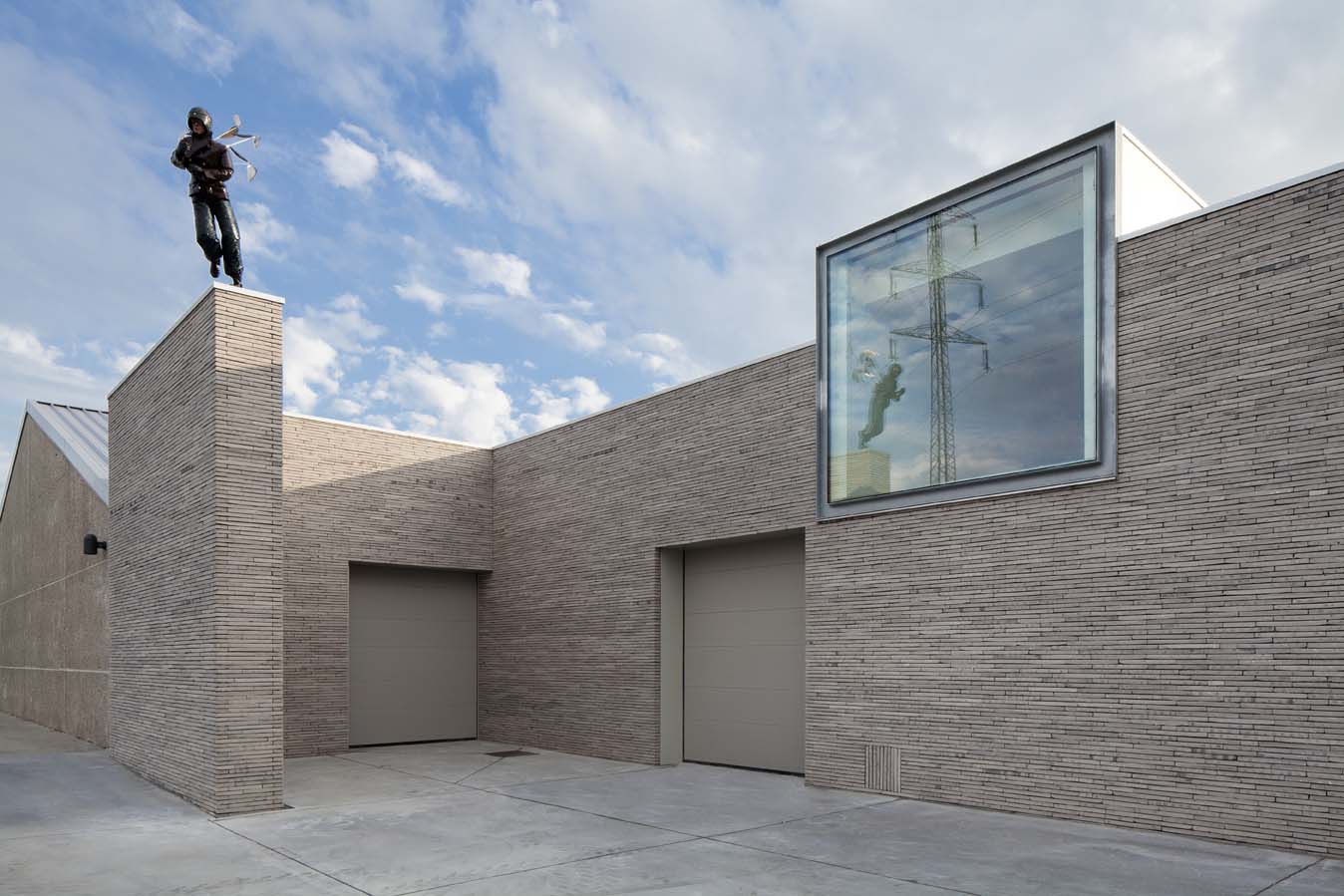The building
Platform 6a is located in the Tiegemstraat 6a, in the rural Belgian town of Otegem.
Since the middle of the 1980s, this was the location of Deweer Gallery.
Until 2006, both Deweer Gallery and the Deweer family’s carpet factory were housed in the same industrial building complex, which consisted of several halls and an office block. By the time the factory was closed, the gallery had already taken over most of the complex.
In 2011-2012, the spaces of the gallery were thoroughly renovated. Far-reaching architectural interventions were carried out, such as a doubling of the publicly accessible spaces (the lobby and three exhibition rooms) to a total area of approximately 1200m². In September 2012, the new gallery opened with the group exhibition 'Re-Opening', which clearly showcased the rejuvenation and renewal of the gallery program.
The special character of the two existing exhibition halls – one of 200sqm from the eighties (now room 3) and one of 300sqm from the nineties (now room 2) – were deliberately left unaltered.
The new Deweer Gallery was the result of a grand scale expansion and a thorough rebuilding of the entire complex. In addition to the existing halls the gallery also disposed of a blackbox, a 200sqm lobby, an extra exhibition hall of 500sqm (Room 1), a studio, a kitchen, an archive, a terrace and several technical facilities. In short, the gallery offered all thinkable spatial possibilities, and every kind of work was shown in perfect conditions.
One other spatial aspect which was fundamental for the Deweer Gallery’s architectural development, was its unique setting amidst a typical Flemish landscape. Our visitors traveled through the countryside in order to get here, and consequently they took their time to see the shows. At the Deweer Gallery, they were welcomed suitably and saw several shows at a time, just like in the new Platform 6a.
Consequently, with the lobby and rooms 1, 2 and 3 now functioning as the heart of Platform 6a, this emphasizes the consistent and crucial architectural role of the building.


